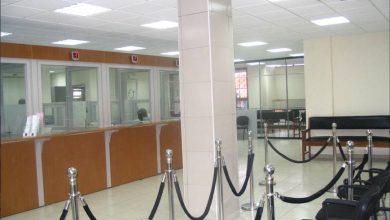Did the Debt Retirement Fund die on arrival?
Faced with a heavy debt burden, in 2021 the Malawi Government mooted a plan to establish a Debt Retirement Fund as a special vehicle to mobilise resources for servicing debt using new sources, including proposed levies on alcohol and cigarettes.
For a country choked with debts against fewer resources to service the same, this was seen as a brilliant idea to create some fiscal space while ensuring that the little resources in the national budget are channelled to the starved social sectors to improve people’s welfare and contribute to economic growth.

Expectations were high and there appeared to be some good progress as the legislation to facilitate the establishment of the fund was embedded into the Public Finance Management Act through an amendment which Parliament passed in the 2021/22 financial year and signed into law by President Lazarus Chakwera.
At the time the fund was created, public debt stock stood at K5.5 trillion. But as of December 2023, Malawi’s public debt, post the 44 devaluation of the kwacha last November, has risen to K13.1 trillion or 84 percent of the gross domestic product (GDP).
Developments surrounding the establishment of the fund mirror the manner the Malawi Government generally carries out its business. There is too much talk or road shows by officials obsessed with high definition (HD) photographs during launches of initiatives than the actual action to deliver a product. Just this week, we witnessed the historic launch of the International Blantyre Cancer Centre, a private sector project championed by Thomson and Barbara Mpinganjira Foundation and its partners, that is providing radiotherapy for the first time on Malawi soil. It was “ordered and delivered” in the shortest time possible. In contrast, the Malawi Government has been chorusing about the National Cancer Centre to provide the same services for decades. Deadlines keep changing, excuses and justifications keep flowing and now, we are told, it will be ready in the course of this year.
Fiscal discipline is critical to managing and reducing high levels of borrowing to maintain fiscal and debt sustainability. However, in our case, weak governance, especially in the management of public finances, coupled with corruption have remained areas of concern as we tend to make two backward steps for every three steps forward. My fear is that in the run up to the September 2025 General Election, when parties in power tend to be in spending mode, the gains made could be washed away.
It is my prayer that when it gets up and running, the fund will have clearly spelt out accountability systems to avoid abuse. Examples abound of similar funds managed by some regulatory authorities which on a daily basis collect millions of kwacha yet the services they generate revenue from keep dwindling in terms of quality. Transparency should be the hallmark of it all to ensure that public funds are used efficiently and for the intended purposes.
Besides, the sources of financing for the fund also need to be critically looked at as introduction of any new tax obligation for citizens to finance retiring of the debt could be deemed ill-advised and insensitive. Tax experts are already on record to have said that in Malawi, the tax burden is heavy on consumers and requires serious overhaul.
Moving forward, the appetite for borrowing should be tamed. In itself, borrowing is not bad as long as it is done for meaningful investments and not mere consumption. Borrowing is deemed sustainable where the borrower is able to settle the debt within the agreed period without being driven into liquidation and utter ruin.
Three years and three Ministers of Finance later, the fund is yet to take off the ground while the debt stock continues to rise with Minister of Finance and Economic Affairs Simplex Chithyola Banda indicating in the proposed 2024/25 National Budget that Treasury plans to borrow about K1.4 trillion to finance a budget deficit in the financial year starting on April 1.
It appears seed capital for the fund remains elusive too that one can rightly conclude that it is a stillborn or indeed brought-in-dead.


